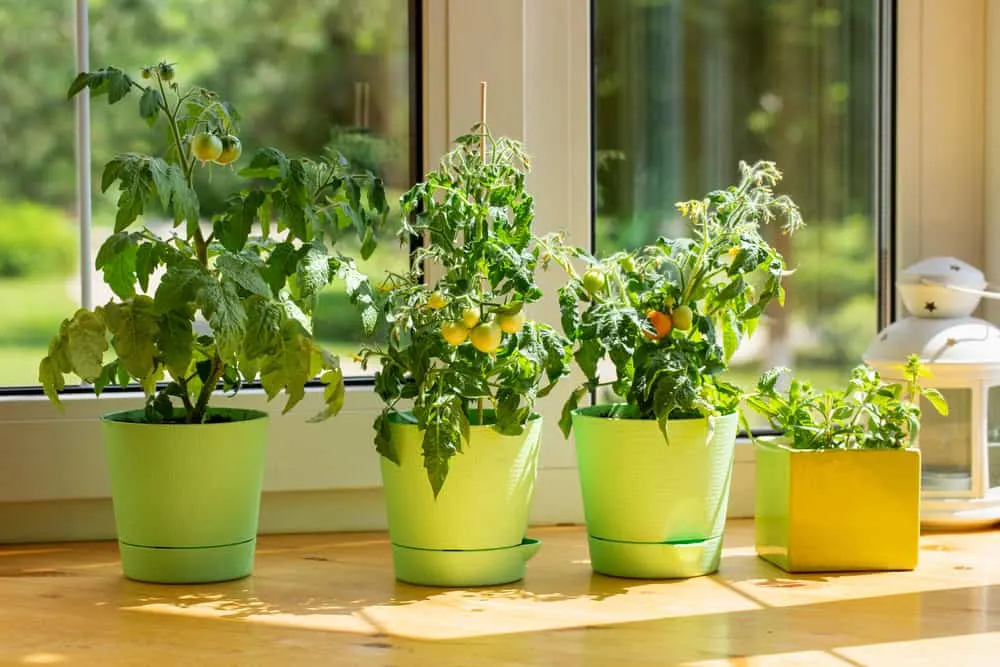
Many gardeners want to join in on the food-growing trend but don’t have the outside space to get started.
The only option for these space-strapped gardeners is to grow indoors. But when it comes to tomatoes, is growing indoors possible?
It can be difficult to reach the required conditions to grow tomatoes indoors. To produce flowers and fruit, plants need plenty of energy from sunlight – something not particularly abundant indoors. But, for committed gardeners, it’s not impossible.
With some adjustments to your indoor conditions and some extra monitoring, you can successfully grow tomato plants indoors for fruits all year round.
Making It Work

Tomatoes grow best in warm climates with lots of sunlight – at least 6 hours a day. The plants can grow several feet tall and need plenty of air circulation amongst the branches of the leaves. You’ll need to replicate these conditions as much as possible to grow successfully indoors.
It may take a lot of adjustment to make it work, and you are still not guaranteed a productive harvest. In fact, even with all the right adjustments, you will not get as many tomatoes from your plant indoors compared to one placed outside.
That being said, you can still get plenty of tomatoes to use all year round. And it’s ideal for gardeners without an outdoor growing option.
If you choose to take up the challenge and plant tomatoes indoors, there are a few things to consider before you get started.
4 Things You Need To Consider
1. Light
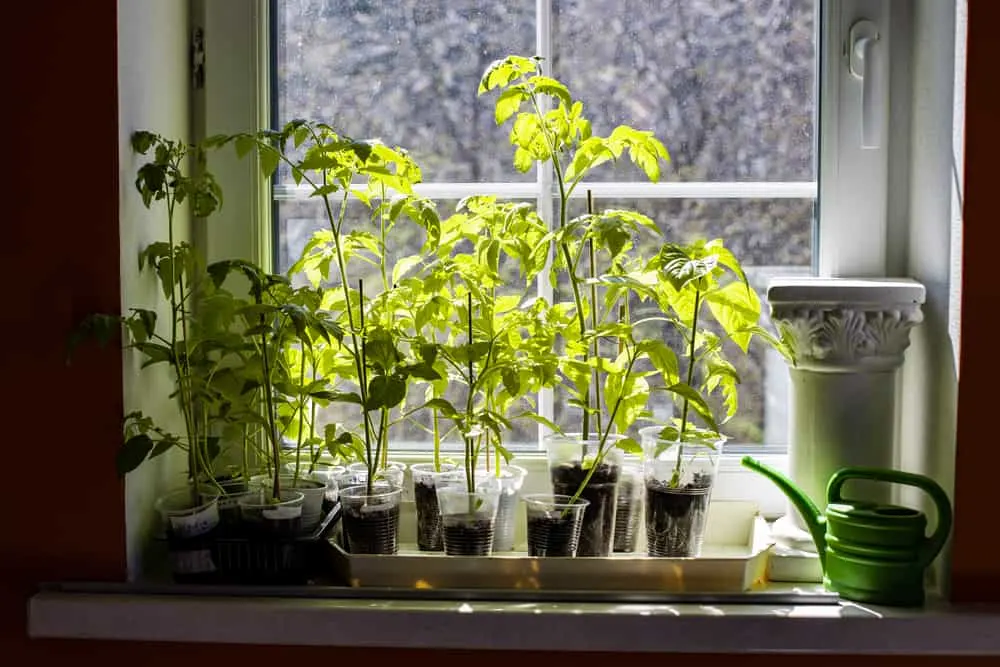
To grow tomatoes successfully indoors, you’ll need a very sunny window. Outdoors, tomatoes need 6-8 hours of light, but the quality of sunlight is not as strong through a window indoors as it is outside. Your indoor tomato plants will need direct sunlight for around 10 hours indoors to grow successfully.
If that’s not a possibility, you can use grow lights to simulate sunlight. They are more costly and may require some adjustment as the plant grows, but they provide plenty of light throughout the day.
You can also combine the two methods. Use grow lights at night if the plant hasn’t received enough sunlight on the windowsill during the day. The same principle applies in cloudy areas and in winter – the tomatoes will still get all the light they need, even if there isn’t enough outdoors.

Light is most important in the early stages of growth. Seedlings need abundant light for rapid growth. Once the plant has matured, a bright window should provide enough light for the plant to produce fruit.
2. Temperature
Temperature is another factor to keep track of and potentially adjust throughout the seasons. Tomato plants love warmth and can’t stand the cold. The ideal temperature is around 80F, and not lower than 60F, to produce productive plants.
Keep your tomato plants in the warmest room in the house or adjust the temperature indoors to make it more comfortable for them and for you. In extremely cold weather, the temperatures near the windows can drop significantly, even if the average temperature indoors is higher than outside. It is best to move the plants away from the windows for the evening to limit any chance of cell damage.
3. Medium
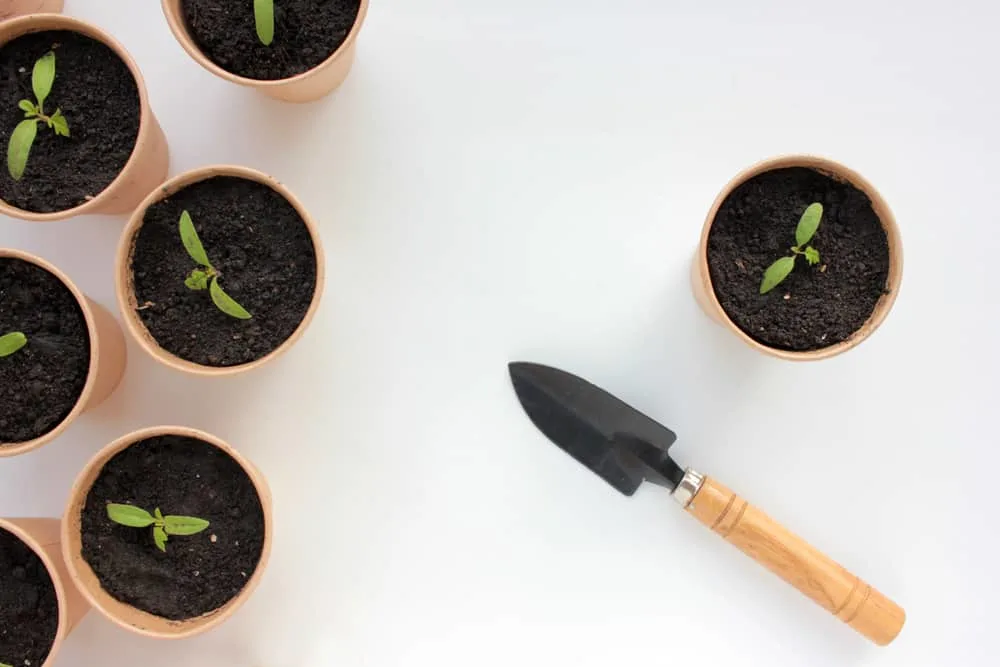
Tomato plants need well-draining soil with enough organic material and nutrients to feed it as it grows. As the nutrients in pots can deplete faster with increased watering (which the tomato plants will need as pots dry out faster), fertilize often as the plant grows to encourage the plants to produce more fruits.
Alternatively, those with a penchant for chemistry can use a hydroponic system. Growing tomatoes in water limits problems with soil-borne diseases and pests (although they are already less likely to spread indoors). Tomatoes are also one of the easiest plants to grow hydroponically – a great option for beginners.
4. Variety
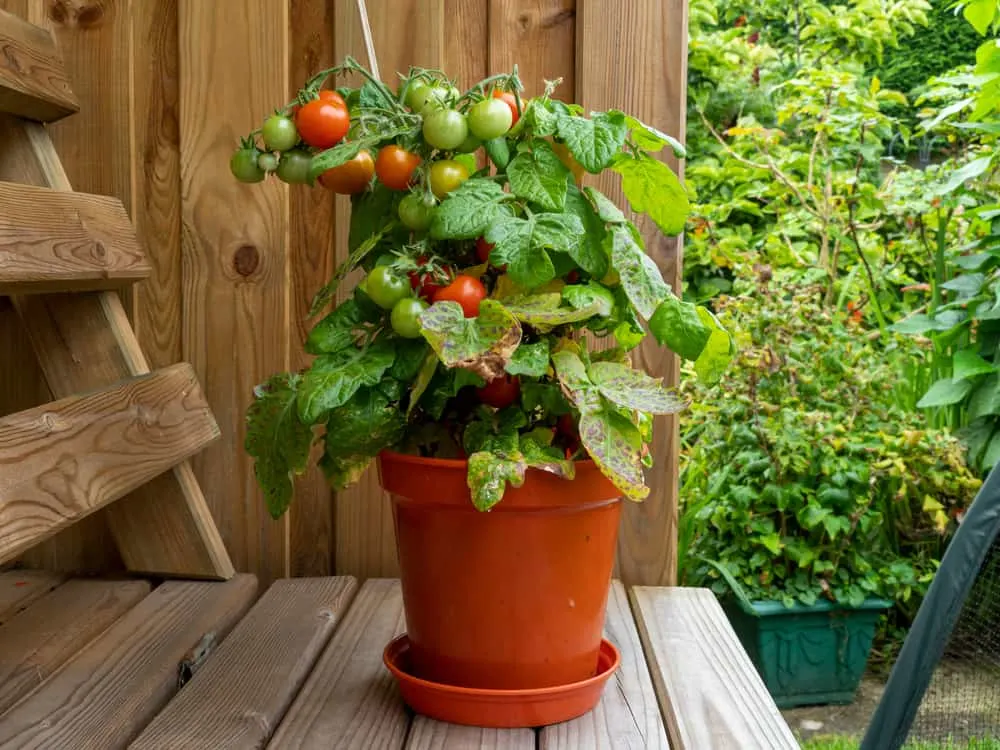
Tomato plants can grow incredibly tall outdoors – far taller than your indoor environment allows for. For your best chances of success, choose one of the smaller varieties suited to indoor growing inside a pot, such as dwarf or pot varieties.
If you are growing indoors for tomatoes year-round, choose an indeterminate variety – not a determinate one. Indeterminate varieties grow and produce fruits consistently, while the tomatoes on determinate plants ripen at the same time.
The Benefits of Growing Indoors

If you manage all these factors, growing tomatoes indoors can provide some great benefits.
As mentioned previously, tomatoes don’t like the cold. But, with controlled temperature indoors, frost is not a danger to your plants.
Outdoors, frost signals the end of your tomato plants and the tomato season. But indoors, the season doesn’t have to end. You can have fresh, juicy tomatoes all year long. Even if you do harvest fewer tomatoes from your plant, you will be able to enjoy them year-round.
You’re also less likely to encounter problems with pests and diseases. Unless you bring them indoors from outside, pests are unlikely to come across your tomato plants by chance. Diseases resulting from outdoor conditions are also limited. Pests and diseases can be incredibly difficult for tomato gardeners to combat – growing indoors largely solves that problem.
How to Grow Tomatoes Indoors

Planting
Now that you’re convinced, it’s time to get planting.
Gather your seeds and a clean seed tray to start. Fill the tray with moistened seedling mix and sprinkle the seeds on top, pressing them lightly into the soil. Leave the tray on a heating mat or in a warm area until the seeds germinate.
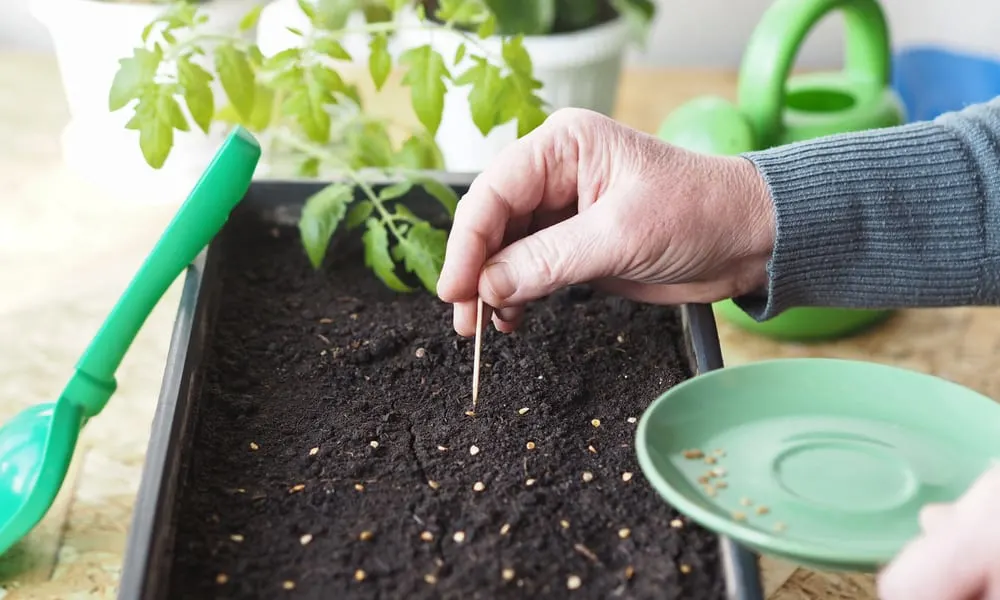
Once the seedlings show two sets of leaves, they can be transplanted into individual pots. Transplant into a pot filled with well-draining potting mix and leave the pot in a sunny spot or under grow lights. Be careful not to damage the roots when transplanting to avoid growth issues.
Related Reading: Planting Tomato Seeds: Everything You Need To Know
Care
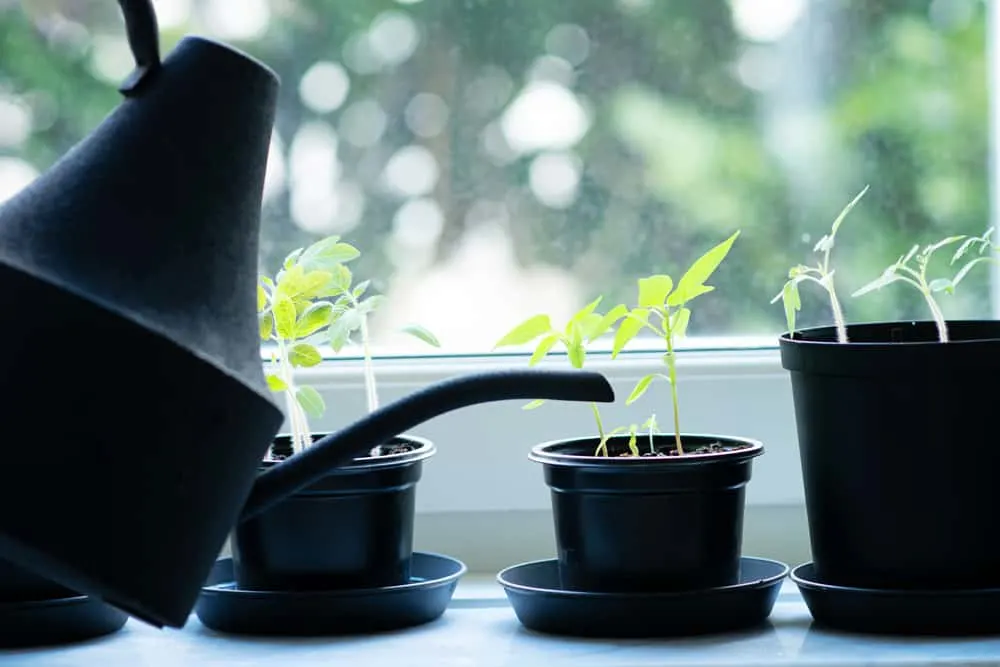
Water your pots once the soil dries out – typically every few days in the right light and temperature. Unless you are using grow lights directly above the plants, you’ll need to rotate the pots frequently to ensure it grows adequately on all sides.
Fertilize the plants every few weeks in the early stages of growth to give the plants plenty of nutrients. Once the plant is fully grown, you can limit the fertilizing and choose a fertilizer designed for flowering plants.
Although tomato plants are self-pollinating, the lack of wind indoors may make the process more difficult. Gently shake the plant every few days to transfer the pollen or place a fan in front of the plant (but only for a short period as consistent drafts can damage the plant).
If the plant outgrows the pot, repot into a larger one. If it begins to topple over or spill out the sides of the pot, it may need support by staking. When the stems get out of hand (your house may turn into a jungle if you’re not careful), prune the plant down to a manageable size.
After two to three months, your tomatoes will be ready to harvest. Take the fruit off the vine before it ripens and leave it on an open counter until the tomatoes are ready to eat.
Growing tomatoes may not be as successful indoors as it is outdoors, but it is not impossible to get a consistent harvest from a healthy plant. It’s a challenge to get the conditions right, but considering all the benefits, it’s one challenge I’m happy to accept.
